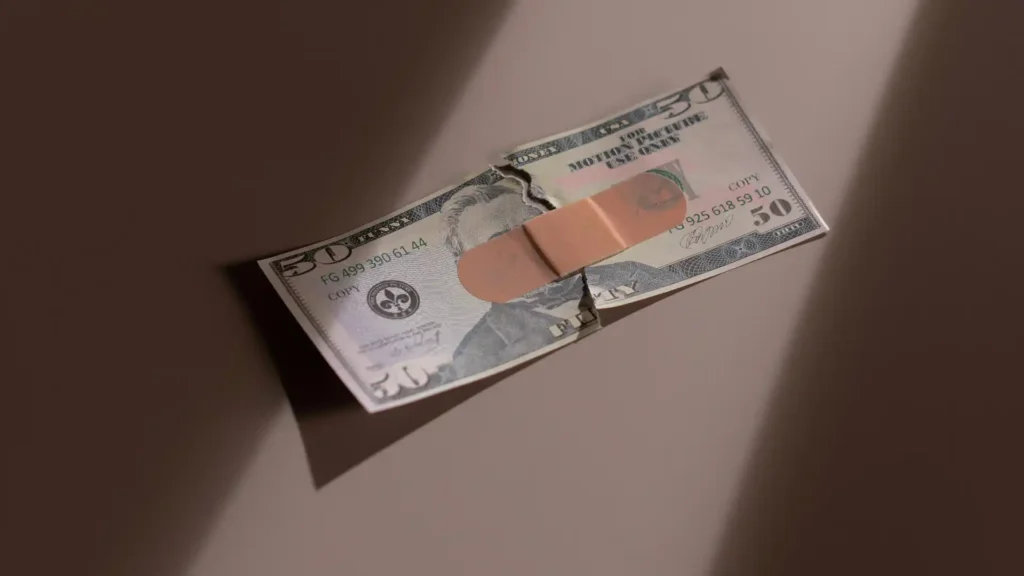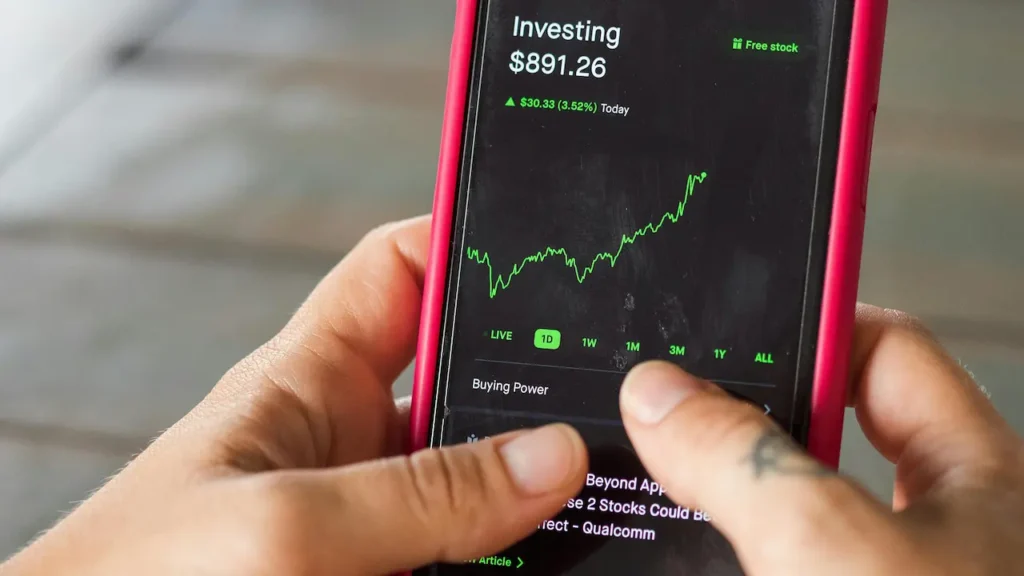You wake up, check your trading app, and your portfolio is bleeding. Stocks are plunging. The headlines scream panic. Your heart races. Should you sell now, hold, or buy more? This is the moment that separates those who survive from those who break. Managing emotions during a crash is not just important. It is everything.
Why Emotions Matter in Crashes
In a market crash, numbers do not just move on a chart. They move inside your head. They push your fear button. They trigger your greed. They make you imagine events that are not real. A simple red candle on the screen can feel like a warning that everything will collapse.
Fear in a crash is powerful. It makes you see disaster where none exists. It whispers that the system will fail, that your savings will vanish, that this time is different. But history shows the market always recovers in some form. Fear hides that truth. Fear tells you to sell now before it gets worse. And when you act on fear, you often sell at the exact wrong time.
Greed in a crash is just as dangerous. It makes you believe this is the one chance to become rich. It pushes you to buy without checking the facts. It tells you the bottom is already in, even when the market may fall more. Greed blinds you to risk. It makes you chase every dip, turning your portfolio into a gamble.
Both fear and greed are traps. They push you into the wrong trades. They make you exit strong positions too early. They make you hold weak positions too long. They turn what could be a manageable loss into a long-term setback.
If you cannot control your emotions, you will make poor decisions. You may sell everything when prices are lowest. You may freeze and do nothing when the right action is clear. You may cling to bad companies while throwing away solid ones. Crashes are brutal not because of falling prices, but because of the human reactions to them.
Here is the hard truth: the market does not punish lack of knowledge as much as it punishes lack of discipline. You can know all the charts, trends, and reports. But if you lose control of yourself, that knowledge is useless. Discipline is the wall that protects you from your own panic.
The good news is that you are not powerless. You cannot stop emotions from showing up. You are human. Fear and greed will always knock on your door. But you can manage them. You can train your mind to respond in a calmer way. You can learn skills that let you act with clarity when others are in chaos.
Think of emotional control as training for the market. It is not a one-time trick. It is a skill. It must be learned, practiced, and sharpened over time. The stronger that skill, the less you are shaken by the storm.
What Happens to the Mind in Crashes
A crash is not just numbers falling. It is a pressure test on your psychology. Most traders and investors fail that test. Why? Because the human brain is wired for survival, not for trading.
Fear of loss is stronger than the joy of gain. When you see your portfolio down 20%, your brain treats it as danger. Your fight-or-flight system kicks in. You want to act fast. You want to sell everything. That is the default human setting.
But in trading, the default human setting is costly. Selling everything in panic may save you short term pain, but it can cause long term regret. Many who sold in the 2008 crash missed the recovery. Many who sold in the 2020 crash never got back in.
On the other side, greed also shows up. Some people jump in too early. They buy because they think they are catching the bottom. They get crushed when the market falls further. Greed makes them rush without a plan.
These emotional waves do not stop. They repeat in every crash. The only way to win is to know the waves are coming. Once you know, you can prepare.
Here is a teaser: the best traders do not avoid emotion. They design systems that protect them from their own reactions. We will get to those systems soon.
How to Control Emotions in Real Time
When panic hits, the first move is no move. Pause. Close the trading app for a moment. Do not let the red numbers push you into action. A pause gives your brain time to shift from reaction to thinking.
You may feel that you must do something fast. That feeling is the trap. Most mistakes happen in haste. The first defense is slowing down. Write down your thoughts on paper. Seeing them written takes away half the fear.
During crashes, news outlets scream louder than usual. They want clicks. They want your fear. But remember, their job is not to protect your wealth. Their job is to get your attention.
Do not anchor on headlines. Anchor on your plan. If you entered a stock with a clear reason, check if that reason is still valid. If nothing has changed except price, then panic is not a reason to sell.
Many emotions in trading come from risk that is too large. If one position can destroy your portfolio, you will not be calm. The solution is position sizing. Keep each trade small enough that a loss is tolerable.
This way, when a crash comes, you feel discomfort, not destruction. Discomfort is manageable. Destruction is not.
Do not wait for panic to design a plan. Decide in advance: what will you do if the market falls 10% more? What if it falls 20%? Having scenarios removes shock. You are ready before it happens.
When the event hits, you are not guessing. You are following your own script. This shifts you from fear-driven to plan-driven. That is power.
Not every red candle is a crash. Not every headline means collapse. Train yourself to check real signals. Look at long-term charts, not only intraday moves. Look at volume, not only price.
Most crashes look huge in the moment but small in hindsight. By zooming out, you reduce the emotional punch. Perspective is a weapon against fear.
Many people think they can “control” emotions by being tough. That fails. Willpower is weak under pressure. Rules are strong.
For example, use stop-loss orders to protect you. Use pre-set alerts. Use automatic portfolio balancing. These tools act when you cannot think straight. They take emotion out of the driver’s seat.
You cannot train calm during a crash if you never train before. Practice emotional fitness when the market is normal. Track your feelings after wins and losses. Notice how greed and fear show up.
This practice builds self-awareness. Awareness is the first step in control. If you can spot your feelings, you can stop them from ruling you.
What the Pros Do Differently
Here is the peak insight. The real gap between amateurs and professionals is not access to secret data. It is not insider calls. It is not some magic tool. The gap is emotional control.
Pros know crashes are part of the game. They do not treat them as rare events. They expect them. They train for them. They see them as stress tests for both portfolios and minds.
When the market falls, pros do not panic. They go back to the rules they built long before the crash. If their system signals buy, they buy. If their system signals sell, they sell. If their system signals wait, they wait. They do not improvise under stress.
Amateurs argue with the market. They say, “It cannot go lower,” and then it does. They say, “It must bounce,” and then it drops more. Pros do not argue. They accept what is happening and move with it, not against it.
One of the biggest differences is preparation. Many pros keep a portion of their portfolio in cash. This is not wasted money. It is dry powder. When prices crash, they see bargains. They are ready to act when everyone else is frozen.
Amateurs often put every dollar into the market. When a crash comes, they have no cash left to buy. They are trapped in fear. Pros, on the other hand, have prepared for this moment. They see discounts where others see disaster.
It is not that pros have no fear. They feel it too. The difference is structure. They use rules, systems, and habits that protect them from panic. Fear is there, but it does not control their hands.
Pros also review history. They study past crashes. They know that the market has always recovered in some form. This knowledge builds perspective. Perspective weakens panic. Amateurs skip this step and assume every crash is the end of the world.
Another difference is risk control. Pros size their positions so that no single loss can destroy them. Amateurs go all in on one stock, then watch their account burn. Pros spread their risk. They understand survival is more important than winning big in one trade.
The only way to master the market is to master yourself. If you fail at self-mastery, no strategy will save you. You will always break your own rules. But if you win at self-mastery, you can face any crash and walk out stronger. That is the line between those who last and those who quit.
Crashes are not going away. You will see many in your lifetime. You cannot predict when they come. But you can decide how you respond.
Managing emotions during a crash is not about being perfect. It is about being prepared. It is about slowing down, following your plan, and letting structure protect you.
Here is what to take with you:
- Emotions in crashes are normal, but they are not commands.
- Pause, then act with intention.
- Use small positions, pre-set rules, and clear scenarios.
- Train emotional awareness before the storm.
- Remember: pros do not avoid fear. They manage it.
The market crash is not the end. It is a test. Pass the test, and you not only keep your wealth. You build strength, patience, and skill that last a lifetime.
That is how you manage emotions during crashes. That is how you grow through the storm.




